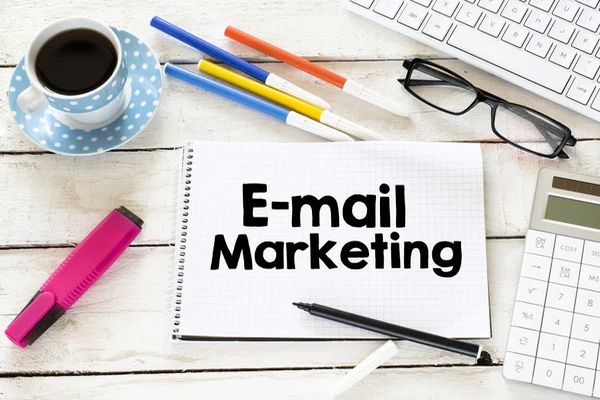
Email marketing is a direct marketing channel that allows businesses to share new products, sales, and updates with customers on their contact lists. Its high ROI makes it crucial to the general entry strategy of most companies.
Modern email marketing has moved away from one-size-fits-all email blasts and is instead focused on consent, segmentation, and personalization. This may sound like a lot of time, but marketing automation handles most of the heavy lifting for you. In the long run, a well-designed email marketing strategy not only drives sales but helps build a community around your brand.
Marketing emails can be promotional, informational, or have a specific purpose in the buyer’s journey.
Email marketing campaigns are used to promote special offers, new product launches, gated content like eBooks and webinars, and your brand in general. A campaign could consist of 3-10 emails sent over several days or weeks.
Promotional emails have a clear call to action (CTA). The CTA represents the specific action you want the reader to take, whether it’s visiting a page on your website or using a coupon to make a purchase.
The sales and marketing pace of your business generally determines how often you send this type of marketing email. During crucial periods like Black Friday, you may be sending multiple promotional emails in the same 24-hour period. During slower periods in the marketing calendar, there may be a few weeks between your promotional campaigns.
Email marketing campaigns

An email marketing campaign is a single email or group of emails that you send to your subscribers. Email marketing campaigns can include special offers, discounts, promotions, or valuable content. However, the purpose of any email marketing campaign is to foster long-lasting relationships between your brand and your subscribers.
An email drip campaign is a type of email marketing campaign that uses automated messages. Emails in drip campaigns are pre-written and then “drip” over days or weeks on a preset schedule. They are most commonly used as welcome, customer onboarding, cart abandonment, and other series emails, but they can also be configured to send based on specific triggers like purchases or opt-ins.
Email drip campaigns make email marketing much easier as you just have to write the emails and set them on a schedule instead of sending each email manually; the campaign essentially runs itself. As always, you should consider your own audience and what they want to see from you before adapting one of the email marketing campaign examples for your own email list. But these examples will give you a great starting point.
Did you know that the average open rate for welcome emails is 50%-60% (constant contact)? Welcome emails are your first chance to make a good impression on new subscribers, so it’s important to take the time to get them right. We really love the idea of sending a welcome email series, sometimes called an indoctrination series, that brings new subscribers “into the fold,” providing them with manageable information about your brand over time rather than making a huge information dump in a single email dump.
How is email marketing done?
Email marketing is a type of direct marketing that uses email as a medium to communicate commercial and non-commercial messages to the public.
On the side of any email sent to a customer (or potential customer) can be considered email marketing. However, this term is used to refer to:
- Sending emails with the intention of bringing the relationship between a business and its current or former customers further along and encouraging loyalty.
- Sending emails with the intention of acquiring new customers or convincing previous ones to buy something immediately.
- Add advertising elements in email messages sent by other companies to their customers.
Businesses in the United States, European countries, and emerging economies are investing more and more resources in email marketing, which is often used by public and non-profit organizations as well.
This indicates that email marketing works, in fact, it is the web marketing tool that works the most.
Email marketing list

Email marketing is the process of targeting your audience and customers through email. Helps you increase conversions and revenue by providing subscribers and customers with valuable information to help achieve their goals.
Now let’s review when you should use email marketing and some benefits and statistics to back up why email marketing is so valuable.
Perhaps the best reason to use email marketing is that you are the channel owner. Outside of compliance regulations, there is no external entity that can affect how, when, or why you communicate with your subscribers.
You need people to email, right? An email list is a group of users who have given you permission to send them relevant content.
To build that list, you need several ways for potential customers to opt in to receive your emails.
Don’t be discouraged if you only have a few people on your list to start with. It may take some time to build. In the meantime, treat every subscriber and lead gold, and you’ll start to see your email list grow organically.
Email campaigns vary and trying to decide between them can be overwhelming. Do you send a weekly newsletter? Should I submit new product announcements? What blog posts are worth sharing?
Your lead magnet is exactly what it sounds like: something that attracts prospects to your email list, usually in the form of a free offer. The offer can take various formats, must be valuable to your prospects, and will be given away for free in exchange for an email address.